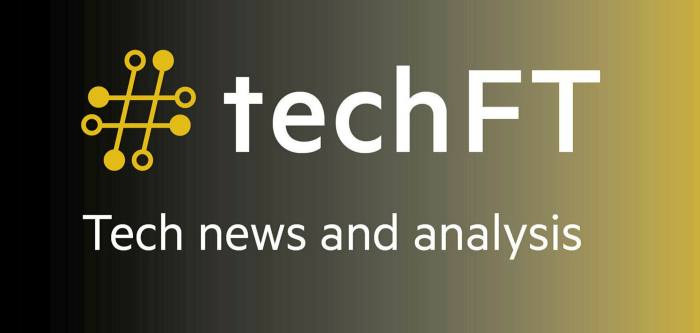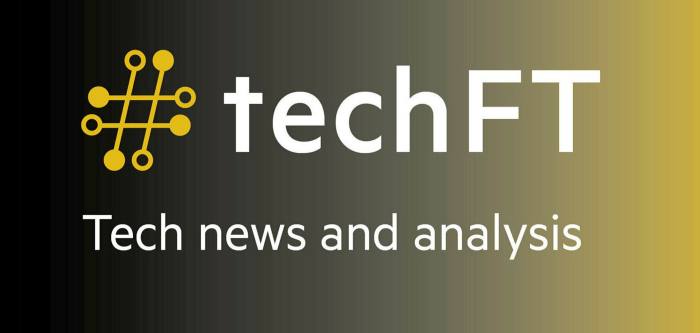[ad_1]
This article is an on-site version of our #techFT newsletter. Sign up here to get the complete newsletter sent straight to your inbox every weekday
Sir Tim Berners-Lee’s original source code for the web, preserved in unique digital aspic, was sold for $5.4m at auction on Wednesday.
The medium here was a non-fungible token (NFT), a crypto certificate of provenance and ownership that Berners-Lee likened to an autographed book. The sale had “offered me the opportunity to look back in time to the moment I first sat down to write this code 30 years ago, and reflect on how far the web has come since then, and where it could go in the decades to come,†he said.
While the amount raised suggests the popularity of NFTs may be waning, they do promise a permanence, purity and authenticity sadly lacking elsewhere on the web, as its founder may well have realised as he looked back.
Law and computer science professor Jonathan Zittrain writes in The Atlantic of the “link rot†that has become endemic over the past 30 years. As well as a significant proportion of broken links where content has disappeared, an analysis of more than 3.5m scholarly articles found that content at the end of 75 per cent of links being referenced had changed.
Then there is the mess of social media, where the original intention of sharing personal events and feelings with friends has been buried by advertisers, influencers and big media organisations intruding. Feature bloat abounds. Improving the photo-sharing app Instagram used to mean just adding a new filter option. Now there is video, a shopping section, messaging and a TikTok-like Reels service as the Facebook-owned app tries to monetise, and match what’s working for rising competitors.
As Elaine Moore commented last week, Instagram has become boring: “Posts from friends are disappearing, replaced by brand campaigns. Influencers, a breed of online celebrity created to flog things to followers, have taken over the app.â€
Adam Mosseri, the Facebook executive in charge of Instagram, admitted as much on Wednesday, saying in a video tweet that it was focusing on creators, video, shopping and messaging. “We are no longer a photo sharing app,†he said, citing internal research that showed Instagram users “number one†reason for using the app was to “be entertainedâ€.
If, like me, you have retreated into private messaging groups to focus on friends again, there is the problem of having them spread across Skype, Slack, WhatsApp, Facebook Messaging, Telegram and Signal, to name just my daily rounds. The uncomfortable non-fungible fact is that they represent another broken link with a web that once united us.
The Internet of (Five) Things
1. Big Tech bills seen as too radical
Senior Democrats are pushing back against attempts by members of their own party to regulate large technology companies, reports Kiran Stacey in Washington. A package of measures being promoted by members of the House antitrust committee is under attack, as opposition builds to radical proposals that some hope could lead to the break-up of Big Tech.
2. UK to back down on digital services tax
Concessions to the US on dismantling Britain’s digital services tax focused on American tech companies is understood to be the price that has been paid for the UK financial services sector’s exemption from new global tax rules. Talks at the Paris-based OECD are expected to conclude today.
Daily newsletter

#techFT brings you news, comment and analysis on the big companies, technologies and issues shaping this fastest moving of sectors from specialists based around the world. Click here to get #techFT in your inbox.
3. Crypto fans plough ‘yield farming’
Traders are garnering juicy returns by lending out cryptocurrencies as the fast-growing field of decentralised finance throws up new but highly risky opportunities to make money. The number of consumer-oriented platforms offering yields on crypto balances has grown rapidly, with annual interest rates ranging from about 7 to 12 per cent, reports Joshua Oliver, who also explains the DeFi practice of “yield farmingâ€.
4. The scoop on MailOnline, BuzzFeed and Taboola
Leading news website MailOnline is worth more than double DMGT’s entire stable of print titles, which includes the Daily Mail, the Mail on Sunday, the I and Metro, according to DMGT’s broker. Alex Barker looks at its parent’s options, including a spin-off. Lex examines the very different business models of BuzzFeed and Taboola, with both listing their respective shares, via Spac mergers.
5. The lifestyles of digital nomads
Digital nomads — people who work remotely online and are “location independent†— have increased in number by 50 per cent in the US during the pandemic. Vanessa Brown has been looking at their wandering lifestyles around the world.
Tech tools — 88in 8K TVs
I love Samsung’s latest 8K TVs, despite the lack of content, and now LG says it is rolling out this month its QNED Mini LED TV range, with the line-up including the 8K QNED99 and QNED 96 models. Meanwhile, James Max has been eyeing the 88in £40,000 8K Beovision Harmony (pictured), which uses LG tech. He settles for the 65-inch at £12,900: “When you switch it on, the speakers tilt from vertical to horizontal and the screen rises. Pointless, but superb. The picture looks great when it’s on, and the telly looks fantastic when it’s off.â€
[ad_2]
Source link







